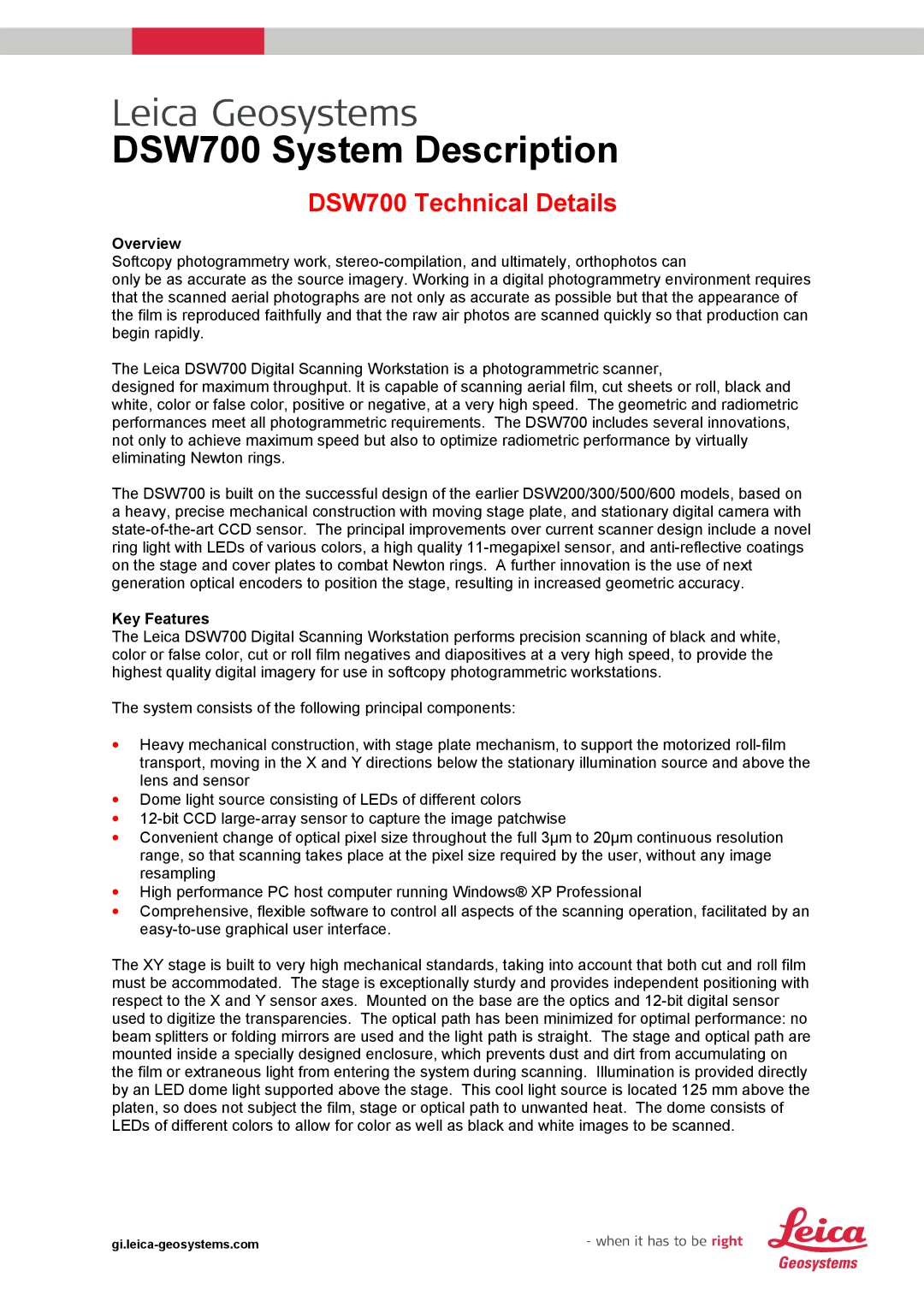
DSW700 System Description
DSW700 Technical Details
Overview
Softcopy photogrammetry work,
only be as accurate as the source imagery. Working in a digital photogrammetry environment requires that the scanned aerial photographs are not only as accurate as possible but that the appearance of the film is reproduced faithfully and that the raw air photos are scanned quickly so that production can begin rapidly.
The Leica DSW700 Digital Scanning Workstation is a photogrammetric scanner,
designed for maximum throughput. It is capable of scanning aerial film, cut sheets or roll, black and white, color or false color, positive or negative, at a very high speed. The geometric and radiometric performances meet all photogrammetric requirements. The DSW700 includes several innovations, not only to achieve maximum speed but also to optimize radiometric performance by virtually eliminating Newton rings.
The DSW700 is built on the successful design of the earlier DSW200/300/500/600 models, based on a heavy, precise mechanical construction with moving stage plate, and stationary digital camera with
Key Features
The Leica DSW700 Digital Scanning Workstation performs precision scanning of black and white, color or false color, cut or roll film negatives and diapositives at a very high speed, to provide the highest quality digital imagery for use in softcopy photogrammetric workstations.
The system consists of the following principal components:
∙Heavy mechanical construction, with stage plate mechanism, to support the motorized
∙Dome light source consisting of LEDs of different colors
∙
∙Convenient change of optical pixel size throughout the full 3µm to 20µm continuous resolution range, so that scanning takes place at the pixel size required by the user, without any image resampling
∙High performance PC host computer running Windows® XP Professional
∙Comprehensive, flexible software to control all aspects of the scanning operation, facilitated by an
The XY stage is built to very high mechanical standards, taking into account that both cut and roll film must be accommodated. The stage is exceptionally sturdy and provides independent positioning with respect to the X and Y sensor axes. Mounted on the base are the optics and
